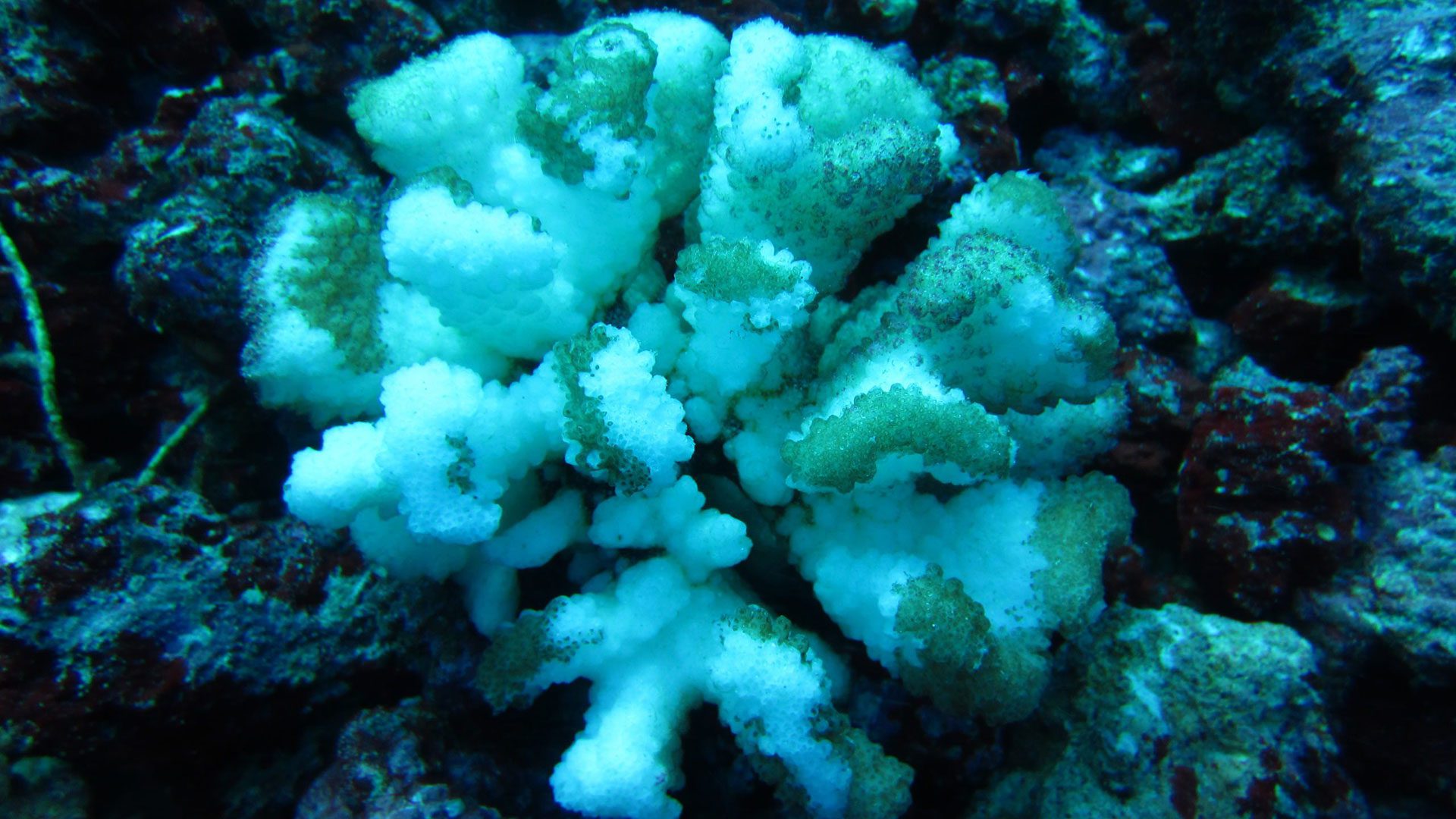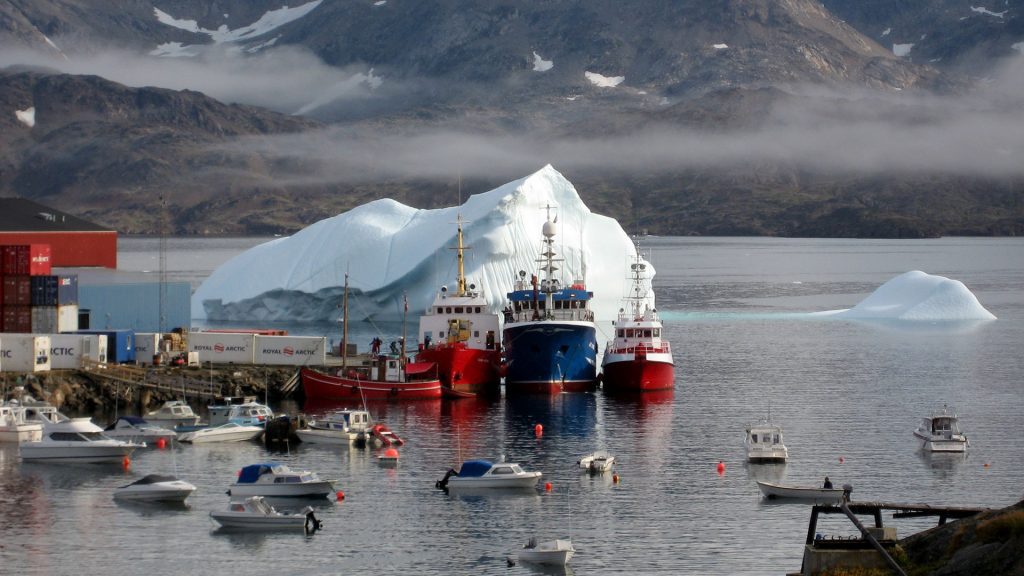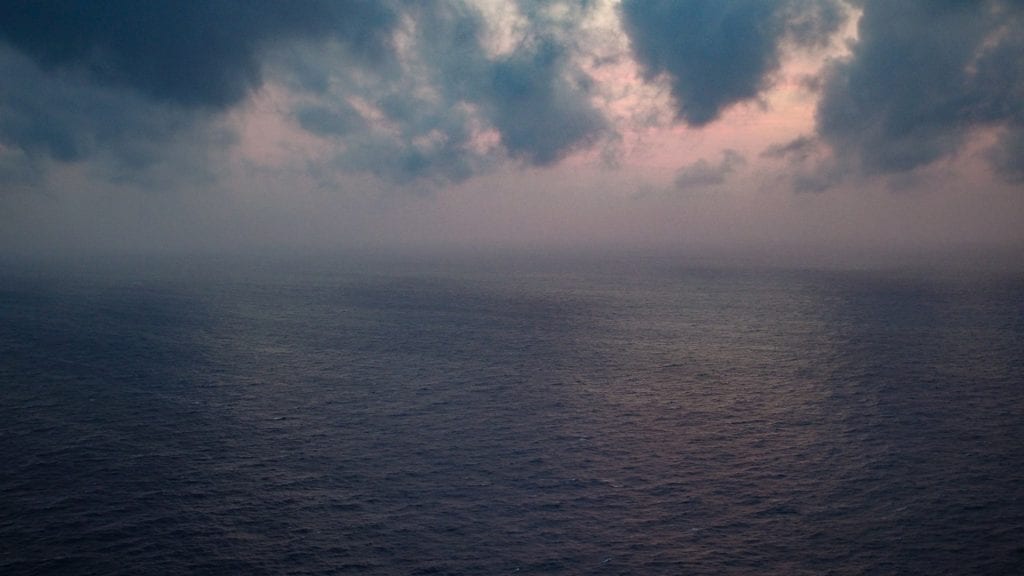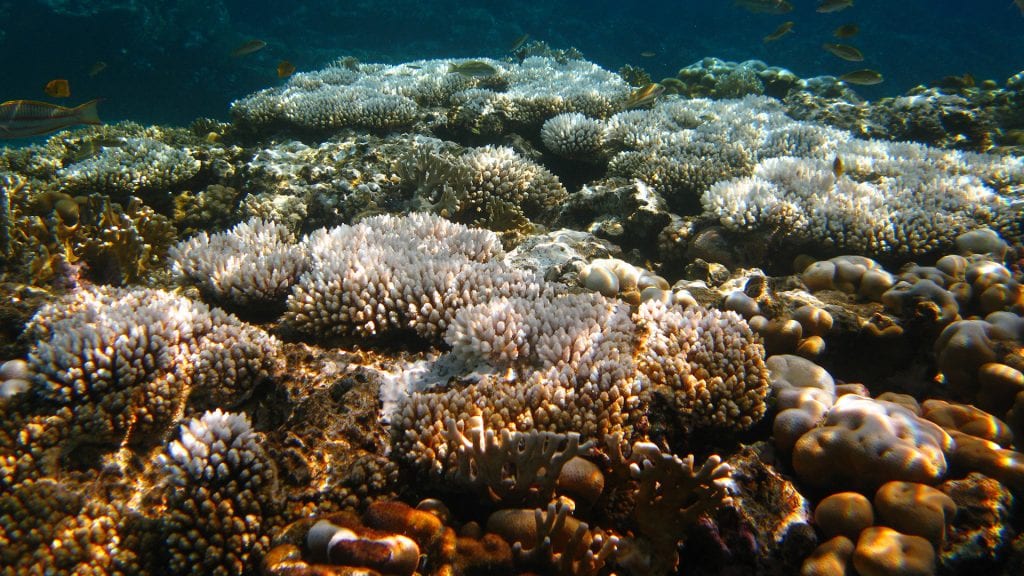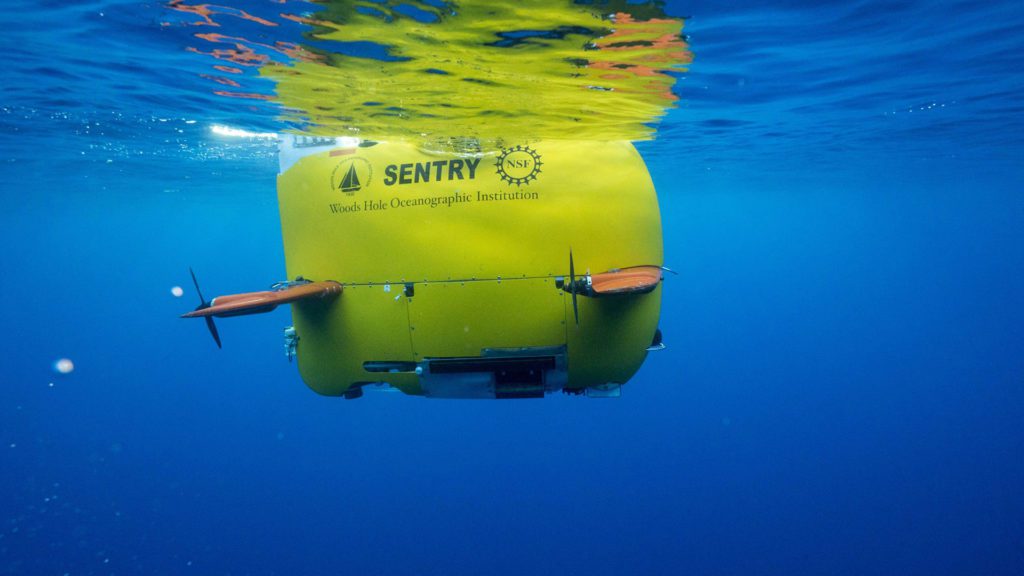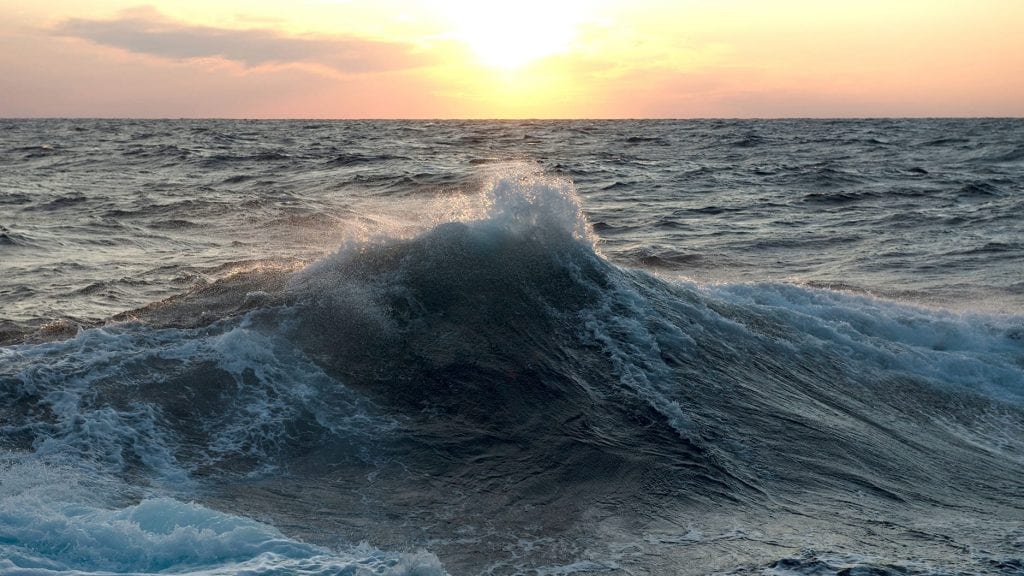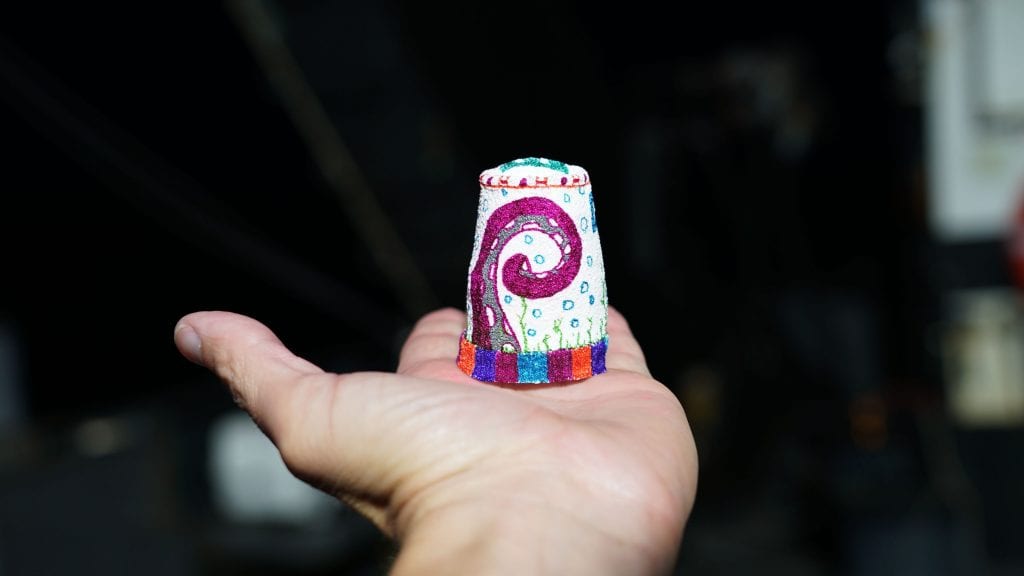Image credit: NASA Earth Observatory
Warm ocean temperatures are contributing to a series of marine heatwaves throughout the global ocean. Marine life can handle the heat on occasion, but these events have been happening more often and show no sign of stopping, forcing marine life to relocate. Those that can’t do so often die.
Marine heatwaves are extreme events. There is no set temperature that defines a marine heatwave because ocean temperatures naturally vary in space and time. They’re colder closer to the poles and warmer near the equator. At the surface they’re warmer in summer and colder in winter. Ocean currents redistribute heat, carrying warm water toward the poles. There, the ocean releases its heat to the colder atmosphere and cools. This helps regulate climate. It also helps cool the ocean when it gets too warm.
To confirm that a marine heatwave is happening, scientists compare current water temperatures with those collected in the past at the same time of year and in the same location. A marine heatwave is most commonly detected when the water is warmer than it was on 90 percent of previous measurements. Marine heatwaves typically don’t affect an entire ocean basin, but they can affect large regions. They’re particularly harmful in coastal areas.
Marine heatwaves can be caused by different factors in the atmosphere and the ocean. Water can store heat much longer than the atmosphere, so the ocean must be exposed to cold air temperatures for long periods before it begins to cool. But sometimes the air doesn’t cool off like it normally does. This can happen during an unusually warm winter. Instead of losing large amounts of heat to frigid winter air, the ocean holds onto most of it. As days grow longer in the spring, the water absorbs the sun’s heat and warms even more. This was the primary reason for a marine heatwave along the U.S. East Coast in 2011 and 2012.
Winds play a role as well. Wind and storms churn up surface waters, mixing deeper, colder waters with surface layers. But winds don’t always blow. This happened during the record marine heatwave in the North Atlantic in 2023. It also happened during the strongest marine heatwave ever recorded, from 2014 to 2016. Nicknamed “The Blob,” water temperatures in the North Pacific reached up to 6° C (11° F) higher than average in some places. Winds that typically blow across the water’s surface decreased during that time and didn’t mix the waters. The heat spread deeper into the ocean, reaching up to 200 meters (650 feet) in some places.
The Blob was devastating to marine life in the North Pacific. Everything was affected, from the phytoplankton that form the base of the food web to top predators like humpback whales. Sea birds died by the thousands, unable to find enough fish to eat. Sea lions and fur seals suffered.
Even in tropical areas accustomed to warm water, heatwaves pose a serious problem. Coral reefs can bleach and eventually die when water temperatures climb. A marine heatwave in the Caribbean Sea in 2023 launched water temperatures to hot-tub levels off the coast of Florida. Corals showed signs of severe stress and some reefs began to die. Scientists rushed to protect them, moving some nursery colonies into indoor tanks and others into deeper, cooler waters. But the only long-term solution is to limit climate change to prevent permanent warming of the oceans.
LEARN MORE
Ocean Warming
Increasing ocean heat is closely linked to increases in atmospheric greenhouse gas concentrations, making the ocean an excellent indicator of how much Earth is warming.
Ocean-Atmosphere Connection
The complex connections of these two systems are responsible for Earth’s weather and climate.
Cheeseman, T. et al. Bellwethers of change: population modelling of North Pacific humpback whales from 2002 through 2021 reveals shift form recovery to climate response. Royal Society Open Science. Vol. 11. doi: 10.1098/rsos.231462.
Copernicus. Record-breaking North Atlantic Ocean temperatures contribute to extreme marine heatwaves. July 6, 2023. https://climate.copernicus.eu/record-breaking-north-atlantic-ocean-temperatures-contribute-extreme-marine-heatwaves
Holbrook, N.J., et al. A global assessment of marine heatwaves and their drivers. Nature. Vol. 10. June 14, 2019. doi: 10.1038/s41467-019-10206-z.
Lindsey, R. NOAA and partners race to rescue remaining Florida corals from historic ocean heatwave. Climate.gov. July 28, 2023. https://www.climate.gov/news-features/event-tracker/noaa-and-partners-race-rescue-remaining-florida-corals-historic-ocean
NOAA. The ongoing marine heatwaves in U.S. waters, explained. July 14, 2023. https://www.noaa.gov/news/ongoing-marine-heat-waves-in-us-waters-explained
Winner, C. Jet stream gets fish in hot water. Oceanus. March 19, 2024. https://www.whoi.edu/oceanus/feature/ocean-heat-wave-linked-to-jet-stream/
DIVE INTO MORE OCEAN FACTS
Why do corals bleach?
Corals have a symbiotic relationship with algae. The algae gives corals their color and provides them with food. In return, corals provide the algae with a place to live.
What are ocean robots?
From the icy poles to sensitive coral reefs, robots empower us to understand more of the ocean than ever before. But just what are they?
What causes ocean waves?
A trip to the ocean means sun, wind, and waves. Surfers ride them. Children play in them. Swimmers dive beneath them. But what causes waves?
Why is pressure different in the ocean?
As anyone who has tried diving to the bottom of a deep pool knows, all that water gets heavy—fast. Extreme pressure is one reason why the ocean floor is still largely unexplored.

